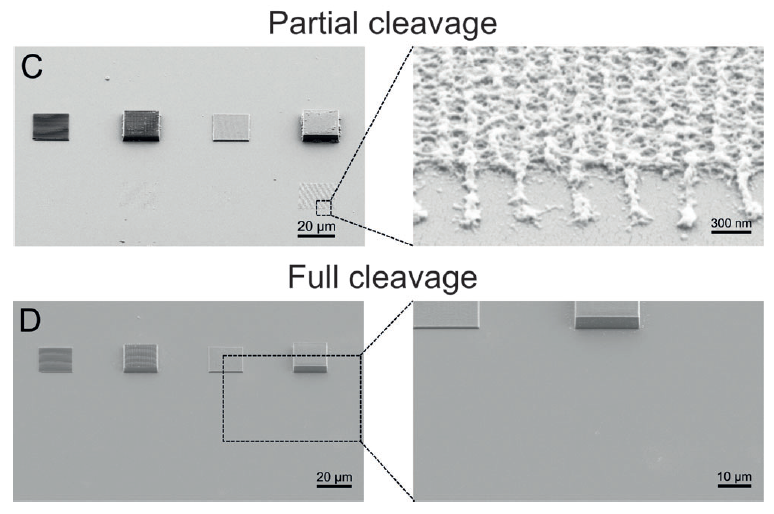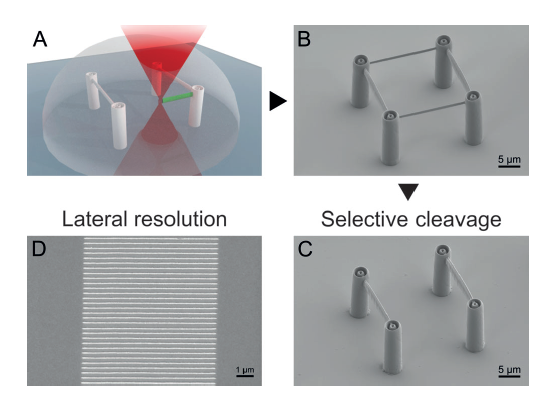Research from the Karlsruhe Institute of Technology (KIT) in Germany demonstrates the ability to repeatedly 3D print and erase microscopic objects in a light-reactive material. More than just a method of correcting 3D printed mistakes, the specially developed ink allows researchers to change the structure of an object at a later stage. Such material flexibility opens up the method of direct laser writing to a variety of applications, including in the area of medical research.
How does it work?
The researchers demonstrate the ink’s functionality by 3D printing nanoscopic lattice and “boxing-ring-like” structures. Lattices 3D printed entirely in the phenacyl sulfide are shown dissolving after chemical treatment. Full erasure typically happens after 15 minutes in a chemical solution heated to 50 degrees.

In the boxing-ring shaped example, the researchers show how structures can be 3D printed in two different materials to use the erasable ink only for a specified portion of the structure.

The medical angle
Working on such a molecular scale, this “erasable” ink has desired application in the medical field, as explained by KIT’s Professor Martin Wegener “During cell growth, parts of the 3D microscaffold could be removed again to study how the cells react to the changed environment”.
Furthermore, mixing the erasable ink with permanent material and then removing it could also be used to create porous structures. Instilling microscopic pores into an object creates an ideal scaffold for growing cells as it matches the texture of human bone. A similar effect has been achieved by researchers at Georgia Institute of Technology in Atlanta by mixing salt into 3D printer material, and removing it with water.
An article on the study, titled Cleaving Direct-Laser-Written Microstructures on Demand, has been published in the international edition of Angewandte Chemie journal, May 2017. Contributing authors are listed as Markus M. Zieger, Patrick Mueller, Alexander S. Quick, Martin Wegener, and Christopher Barner-Kowollik
As previously reported on 3D Printing Industry, KIT’s Institute of Microstructure Technology (IMT) also recently released a paper demonstrating a method for 3D printing with glass.
For more of the latest 3D printing released research sign up to the 3D Printing Industry newsletter, and follow our active social media sites.
Don’t forget to vote in the first annual 3D Printing Industry Awards.
Tickets for the 3D Printing Industry Awards are also now available here.
Featured image: Graphic representation of the erasable 3D printed ink from the Karlsruhe Institute of Technology.


